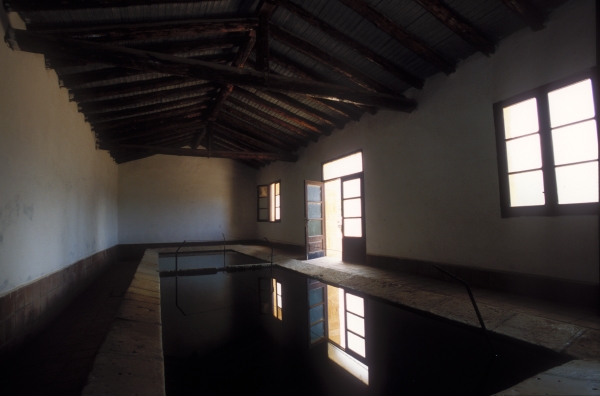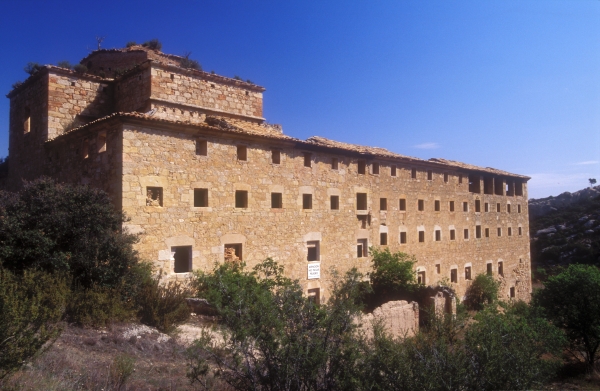Welcome to Berge, a locality in the Lower Aragon region, located in the Guadalopillo Valley, in the vicinity of the Gallipuén Reservoir.
Its name originated in Pre-Roman times, derived from the Proto-Indo-European root berg, meaning mountain or place between hills.
The necropolis found at the Virgen de la Peña archaeological site shows the Visigothic origins of Berge, although fragments of Iberian and Roman pottery have been found in the area. After the Christians reconquered the region from the Moors, the locality lay inside the land controlled by the Military Order of Calatrava, part of the borough of Alcañiz which was responsible for administration of the outlying area. This dependency on Alcañiz would extend through to the 19th century, in the later period under the city administration.
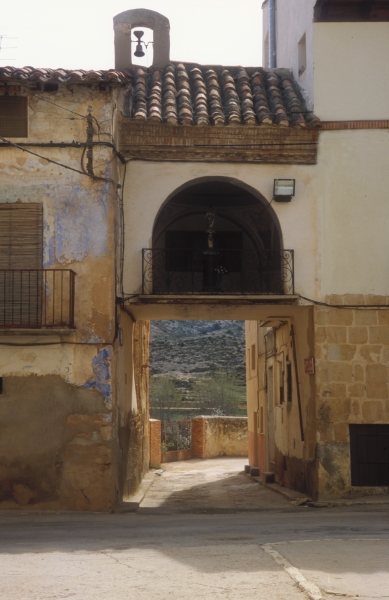
One of the most outstanding sights in Berge is the church, dedicated to Saint Peter of Verona. Built in the first half of the 18th century in the Baroque style, its ceiling is a remarkable series of domes, with the surrounding pendentives decorated with depictions of saints. Of interest are the mural paintings in the dome over the high altar and the bell tower, which is a fusion of the Baroque and Mudéjar styles.
There is an abundant wealth of religious heritage preserved in Berge. The santuary of La Virgen de la Peña stands in a beautiful but difficult to reach setting. A procession is made to this shrine on 14 July every year in commemoration of the apparition of the Virgin Mary at this site, part of the locality's main festival. The chapel was practically destroyed in 1936 when the crag it had been built beneath collapsed, and it was rebuilt in 1950.
The Calvario (Mount Calvary procession route), created in the 18th century with Franciscan influence, is found on raised ground just outside the locality. The chapel dedicated to Saint Francis Xavier, located at the entrance to Berge, is also in the Baroque style. Among the chapels and niches filled with religious statues in the streets of the locality, is the niche-chapel of La Virgen del Pilar, built over a doorway with a semicircular arch and bell gable.
The town's architectural heritage includes 17th-century mansions with grand arched or lintelled doorways, beautiful examples of wrought iron and carved wooden eaves, such as those on the houses known by the names of Casa Gracia Ferrer, Gasa Ginés Ginés and Casa Aranda Gasión.
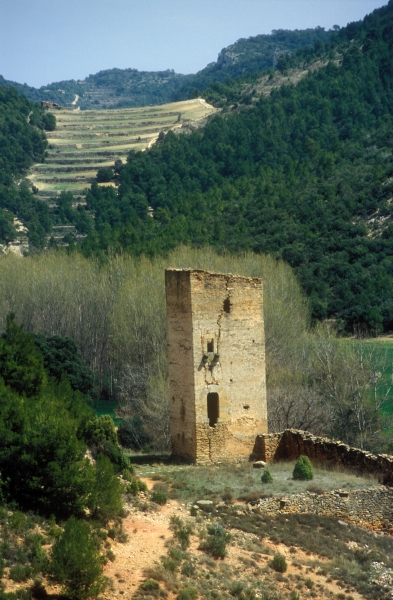
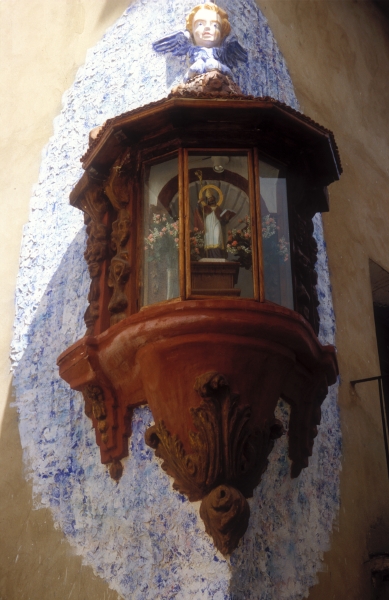
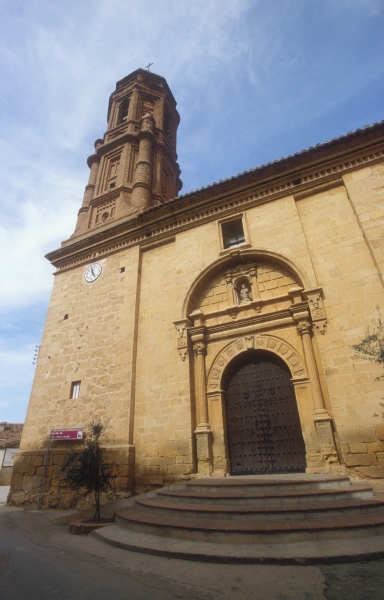
Lastly, other points of interest should not be overlooked, including the old communal bread oven, the hydraulic engineering complex that consists of a fountain-drinking trough and wash house,and the remnants of the medieval defences exemplified by the Piquer Tower.
RECOMMENDED LINKS
20 villages, 20 events Holy Burial
For more information on the cultural heritage of Berge.
Welcome to Calanda, a town in the Lower Aragon region located where the . Rivers Guadalope and Guadalopillo merge. Its name is thought to derive from that of the ancient Celtiberian settlement known as Kolenda. Its name is also accompanied by the honorific titles of “Most Ancient”, “Most Loyal”, “Faithful” and “Most Faithful”.
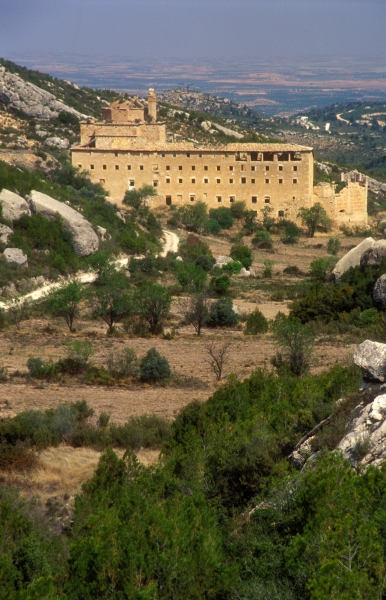
Archaeological remains have been found in the area dating from the Palaeolithic period, which is testament to very early human settlement. The culture of the Ancient Iberians is also present in the settlements found at the Cerro Castiel and Campo Consejo archaeological sites. But the most significant remains are found in the Albalate district, where there was once a luxurious Roman villa, from which a beautiful mosaic is on display at the Archaeological Museum in Teruel.
During Moorish rule, the town was laid out around a no longer existent castle. The tradition of ceramics and the irrigation system in the area dates back from that period. The Los Arcos Aqueduct, located in the Los Arcos district of Calanda was probably built by the Moors. This monumental work of hydraulic engineering was built in stone and is characterised by five large semicircular arches supporting a channel.
Calanda was included in the lands donated by King Alfonso II of Aragon to the Military Order of Calatrava after the Christians reconquered the region from the Moors, and received its town charter in 1360. At that time, the old quarter was laid out around a medieval castle, which was practically destroyed during the First Carlist War in 1839. Part of the outer wall, some inner walls, the access ramp and a cistern have been preserved.
In 1640, the Miracle of Calanda took place. This is the name given to a miracle in which Our Lady of the Pillar restored the leg of Miguel Pellicer, which had been amputated two years before. As a consequence of this, the church of El Pilarwas built. Originally a small chapel, it was turned into a splendid Baroque-style masonry church, completed in 1722. Adjacent to the church is the former home of Miguel Pellicer, now a museum.
The other examples of religious heritage offered by Calanda are also of great interest. These include the church of Nuestra Señora de la Esperanza and the Route of the Chapels, which affords the opportunity to explore the streets of Calanda in order to discover the chapel of San Roque, the chapel of Santa Bárbara y San Marcos, the Humilladero chapel, the chapel of La Virgen del Campo, the chapel of Santa Águeda, and finally, the chapel of San Blas, which stands at the highest point of the town. Likewise, not to be overlooked is the former convent of the Discalced Carmelites, known as the Desierto de Calanda, located outside the town proper.
However, the most representative piece of Calanda's religious heritage is its Holy Week celebrations. The locality is a part of the Drum Route, and annually draws masses of visitors to see its processional floats, confraternities and the traditional “Rompida de la Hora” (Breaking of the Hour), which takes place at noon on Good Friday.
With the sound of the drums still ringing in your ears, now internationally renowned thanks to the towns's now international film-maker, Luis Buñuel, whose house can be visited which was designed by the Aragonese architect Ricardo Magdalena, and the Buñuel Centre of Calanda, where there is an extensive exhibition of his work on display.
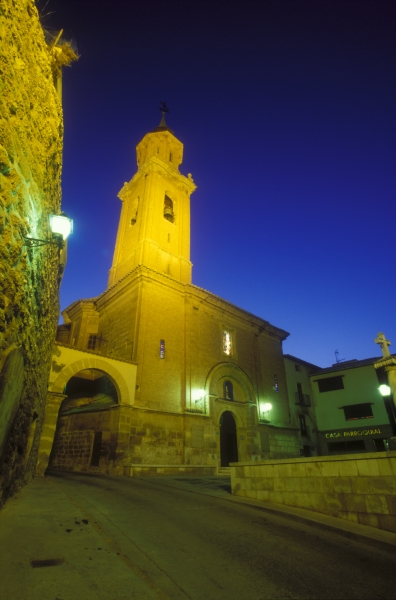
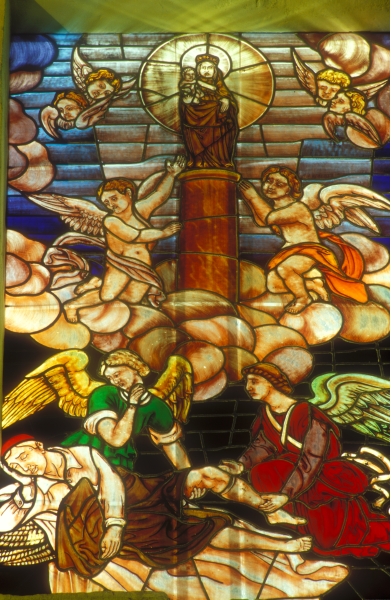
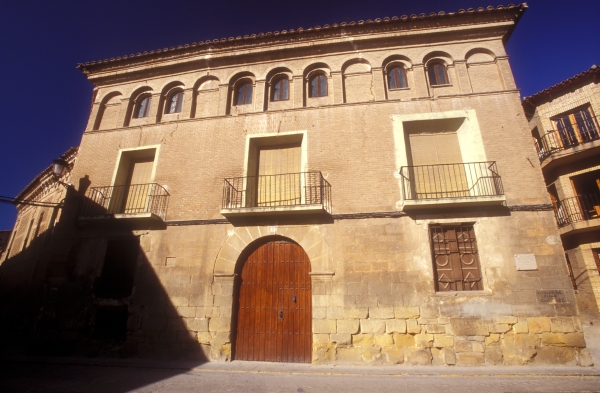
Other outstanding examples of architecture in Calanda include the mansion known as Casa Allanegui, with its traditional Aragonese-style arcaded gallery, the town hall, the Cultural Centre, located in the former Carmelite convent inside the town, and the Crespo Cold Vault, which is part of the Route of the Ice Houses and Cold Vaults, as is the ice house found at the Desierto de Calanda convent. The Crespo Cold Vault has two wings, added at a later date, which are used as exhibition spaces. see technical specifications
One of the spaces is used for the showing of an audiovisual installation explaining how the cold vault was filled and how it worked. In another of the side rooms there is a series of backlit panels explaining the different uses that could be given to the snow that was stored in the cold vault: food preparation, medicine, etc.
The main hall shows how the different layers of snow were arranged by means of a cross section.
RECOMMENDED LINKS
For more information on the cultural heritage of Calanda
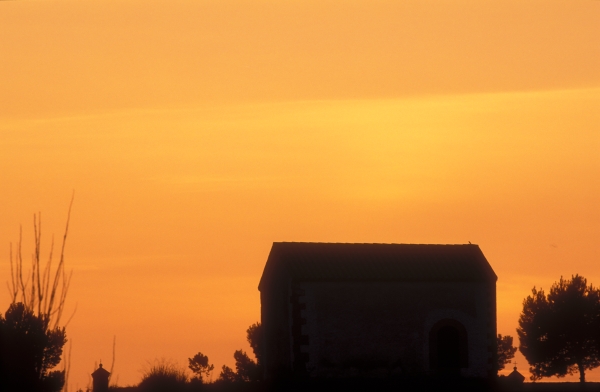
Welcome to Castelserás, a town in the Lower Aragon region. The town is situated on a hill on the right bank of the River Guadalope, close to where it meets the River Mezquín, some 8 kilometres from Alcañiz.
Its name is most probably derived from that of the Ancient Iberian settlement of Castrum-Zerás, or Fort of the Lion. Inside its municipal boundaries the oldest archaeological ruins in the Lower Aragon region can be found, which date from the Middle Palaeolithic or Mousterian period. A number of different sites can also be found, dating from different periods, particularly on the banks of the Guadalope.
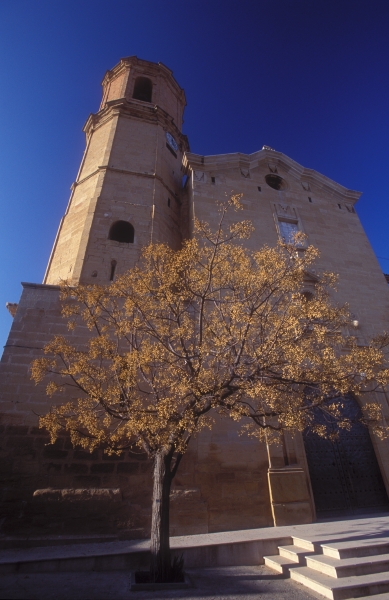
Castelserás was part of the lands donated by King Alfonso II of Aragon to the Military Order of Calatrava after the Christians reconquered the region from the Moors. The town found today is known to have been created in about 1278 in the area of hills and wooded grasslands that the knights of the order possessed between Alcañiz and Calanda. It was independent until 1402 when it became a part of the towns depending on Alcañiz, which led to a lengthy struggle for autonomy, which in the end it legally achieved in 1750.
The town stands on a hill and Calle Mayor, the main street, forms the boundary of the medieval town. Above the rooftops of the locality rises the church of Nuestra Señora de la Natividad. This Baroque church dating from the second half of the 18th century is in keeping with the design of other churches in the area, and highly influenced by the style of the Basilica of Our Lady of the Pillar in Zaragoza (Saragossa). It has a nave and two aisles of the same height according to the hall church layout, with a barrel vault ceiling, lunettes and groin vaults, and a slender tower at the front end of the church. The church was burnt by the troops serving under Sergeant Cabrera during the First Carlist War, and was later restored.
The Plaza España, the square where a great bonfire is lit on 19 January every year in honour of Saint Sebastian, is where the town hall can be found, raised on the site of the former market dating from the 16th century. Inside is a piece of work by the painter Francisco Marín Bagüés, who spent his summers in Castelserás, which depicts the coat of arms of the municipality held aloft by his niece Leopoldina.
Continuing along the streets of Castelserás soon takes visitors to the old Commandery House. Originally used as a storehouse for the tributes paid to the knights of the military order, it is now the interpretive centre on the botanists Loscos and Pardo Sastrón, a visit which is completed with the botanic walk that runs along the banks of the Guadalope.
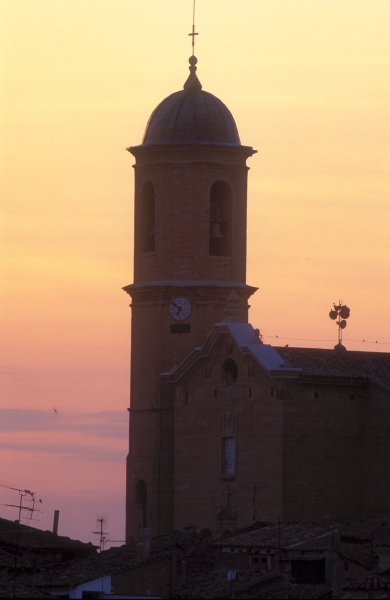
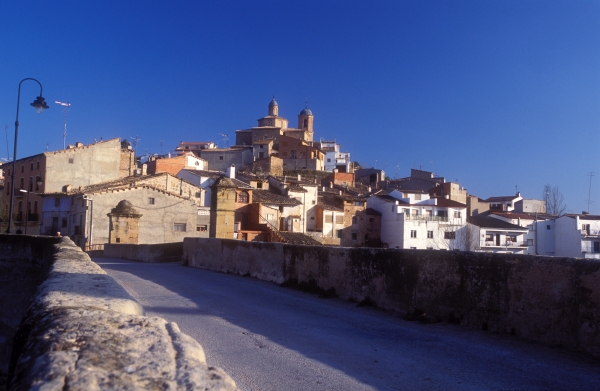
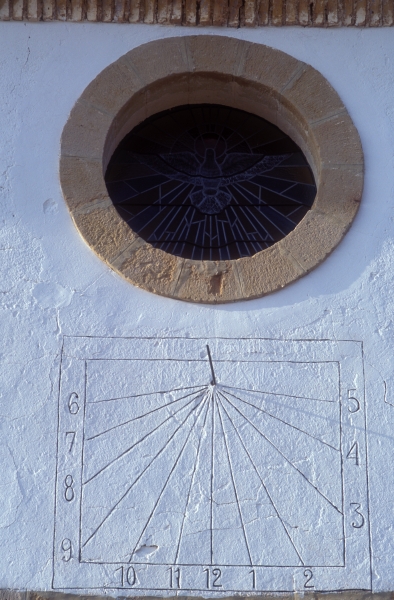
And crossing the river, Castelserás has a magnificent bridge, possibly Roman in origin, on which there are three small Baroque niche-chapels dedicated to Saint Paschal, Our Lady of the Pillar and Our Lady of Guadalupe. Not to be overlooked is a visit to the example of hydraulic engineering visible in the fountain-wash house, and the house known as Casa Cascajares.
Outside of the town proper is the chapel of El Calvario, which dates from the 16th century, although the present structure is from the 19th century. Further away is the chapel of Santa Bárbara, a simple Neoclassical building with a porch at the front dating from the first part of the 19th century.
Recommenden links
20 villages, 20 events: Bonfire of Saint Sebastian
More information on the cultural heritage of Castelserás





